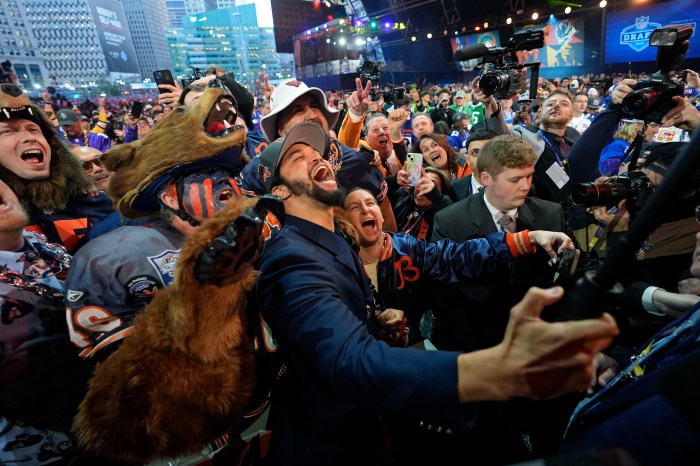HALLE, Belgium – All Oscar Pistorius wants is a shot at the Olympics.
It’s a wish that has turned into a contentious and heart-tugging story. It’s a wish that is dividing sports fans and scientists alike.
The double-amputee sprinter from South Africa longs to run on his artificial Cheetah blades in Beijing. At the heart of the complex case is a straightforward question: To what extent can a disabled athlete enhance his ability with mechanical aids?
“However hard it is on him, it is latching something mechanical onto an athlete and have him compete against others who are fully of flesh and blood,” said local basketball coach Ann Moermans, as she led away a group of nine-year olds from the Spotter Leuven team.
Nicknamed the “Blade Runner,” Pistorius has used his athletic talent and prosthetic limbs to become the globe’s fastest impaired runner, setting world records in multiple Paralympic events.
But his quest to compete against the world’s best able-bodied athletes seems increasingly unlikely to be fulfilled. Track and field’s governing organization is set to decide Monday whether to quash what would surely be one of the most uplifting stories leading to the Aug. 8-24 Olympics.
In all likelihood, the International Association of Athletics Federations will rule that his carbon-fibre blades are an illegal technical aid. That would remove Pistorius from official events and qualifying for the Olympics.
In academia, his case is followed with interest, especially by bioethicists debating where normal medical therapy ends and human enhancement begins. For them, it touches on the fundamental issue of how far technology will be allowed to go to turn mankind into something more than merely human.
“The question is: What justifies the separation of the Olympics from the Paralympics – the level of performance or the body structure of the athletes,” wrote professor Gregor Wolbring of the University of Calgary.
In the midst of all that stands an amazingly driven 21-year-old athlete, seemingly chiselled from Greek marble from the knees up. Pistorius’ lower legs were amputated when he was 11 months old.
Professor Gert-Peter Brueggemann in Germany conducted tests on the prosthetic limbs in November and said they give Pistorius a clear edge over able-bodied runners. Pistorius has prepared for the worst and pledged to take his case to court.
“I feel that it is my responsibility, on behalf of myself and all other disabled athletes, to stand firmly and not allow one organization to inhibit our ability to compete using the very tools without which we simply cannot walk, let alone run,” Pistorius said in Pretoria on Friday.
By raising the moral bar and positioning himself as a leader for all disabled athletes, he takes the issue far beyond the technical data of his J-shaped running blades, which look futuristic compared to the artificial legs he uses for everyday life.
But the IAAF wants to stick to a simple rule: If the blades give you an edge, out you go – back to the realm of the Paralympics. With Brueggemann’s study, the IAAF is convinced it has enough arguments to prove exactly that.
Because its executive council was still in the process of completing its decision on Pistorius, the IAAF did not want to comment over the weekend.
Brueggemann has said Pistorius has “considerable advantages over athletes without prosthetic limbs who were tested by us.”
“It was more than just a few percentage points. I did not expect it to be so clear,” he added.
The Icelandic company Ossur, a leader in the production of prosthetics, made Pistorius’ Cheetah blades. The company says the blades do not provide an edge, adding he is using decade-old technology that never raised questions when used by other disabled runners.
“We are sitting with a situation here with a remarkable athlete who has created this scenario. There has never been an athlete like Oscar before challenging able-bodied athletes,” said his manager, Peet Van Zyl.
Without discrediting Brueggemann’s two days of tests on Pistorius, Ossur said his findings are incomplete and should have taken other factors into account.
Ossur proclaims itself a “committed advocate of life without limitations,” trying to give disabled people as full a physical life as possible.
But some say going beyond that in sports – and trying to create something more than human – is not only treading onto the issue of performance-enhancing drugs, but also on futuristic topics like so-called cyborg athletes with bionic implants.
After all, some athletes can already have laser eye surgery to better spot an incoming fastball or assess the roll of the green from far away.
“Where should the line be drawn between ‘legal’ and ‘illegal’ human enhancement technologies,” Wolbring asked in a paper for Innovation Watch.
“Bionic athletes might outperform biological athletes in the future,” he said. “This means that biological athletes might be the Paralympic athletes of the future.”


















